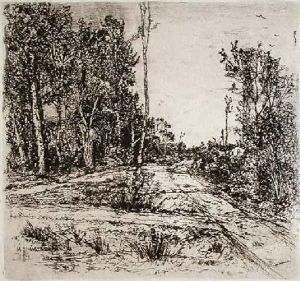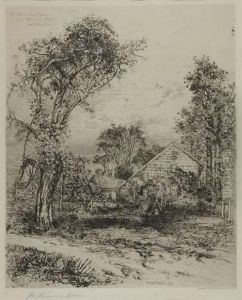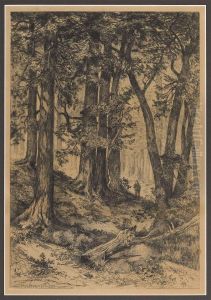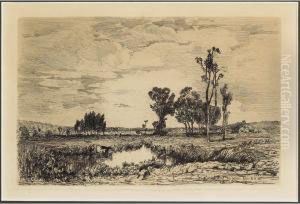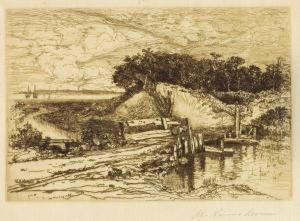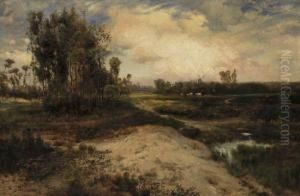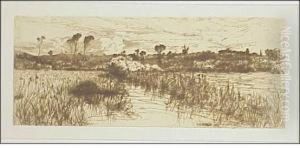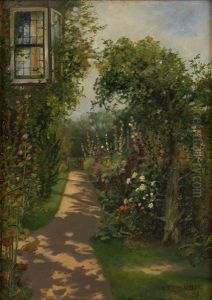Mary Nimmo Moran Paintings
Mary Nimmo Moran, an influential figure in the American etching revival of the late 19th century, was born on May 27, 1842, in Strathaven, Scotland. Her family emigrated to the United States during her childhood, settling in Crescentville, Pennsylvania, near Philadelphia. Mary showed an early interest in art, which was encouraged by her family. She became particularly accomplished in the medium of etching, a form of printmaking that was undergoing a significant revival in America and Europe during her lifetime.
Mary Nimmo married Thomas Moran in 1863, who was himself a prominent artist known for his landscape paintings. Thomas played a crucial role in Mary's artistic development, encouraging her to pursue etching. She quickly mastered the technique, becoming one of the first women to gain recognition in the male-dominated field of landscape etching. Mary's work often depicted the American landscape, including scenes from the East Hampton and Long Island areas where she and Thomas spent much of their time. Her etchings are characterized by their detailed rendering of natural scenes and a dynamic interplay of light and shadow, which she achieved through innovative etching techniques.
Throughout her career, Mary Nimmo Moran was celebrated for her artistic achievements and was one of the few women of her time to gain admittance to professional art organizations. She was a member of the New York Etching Club, the Society of Painter-Etchers in London, and the only woman to be elected to the Fellows of the London Society of Painter-Etchers. Her works were exhibited widely during her lifetime, both in the United States and abroad, garnering critical acclaim.
Moran's influence extended beyond her own artistic achievements; she was also instrumental in promoting the work of other artists, including her husband, through her social and professional networks. Despite facing the societal challenges of being a woman artist in the 19th century, Mary Nimmo Moran's contributions to the field of etching and to American art have been enduring.
Mary Nimmo Moran passed away on August 25, 1899, in East Hampton, New York. Her legacy is preserved in the collections of major museums, including the Smithsonian American Art Museum, the Metropolitan Museum of Art, and the National Gallery of Art, among others. Her life and work continue to inspire artists and art historians, and her role in the American etching revival is celebrated for its innovation, technical skill, and artistic beauty.
